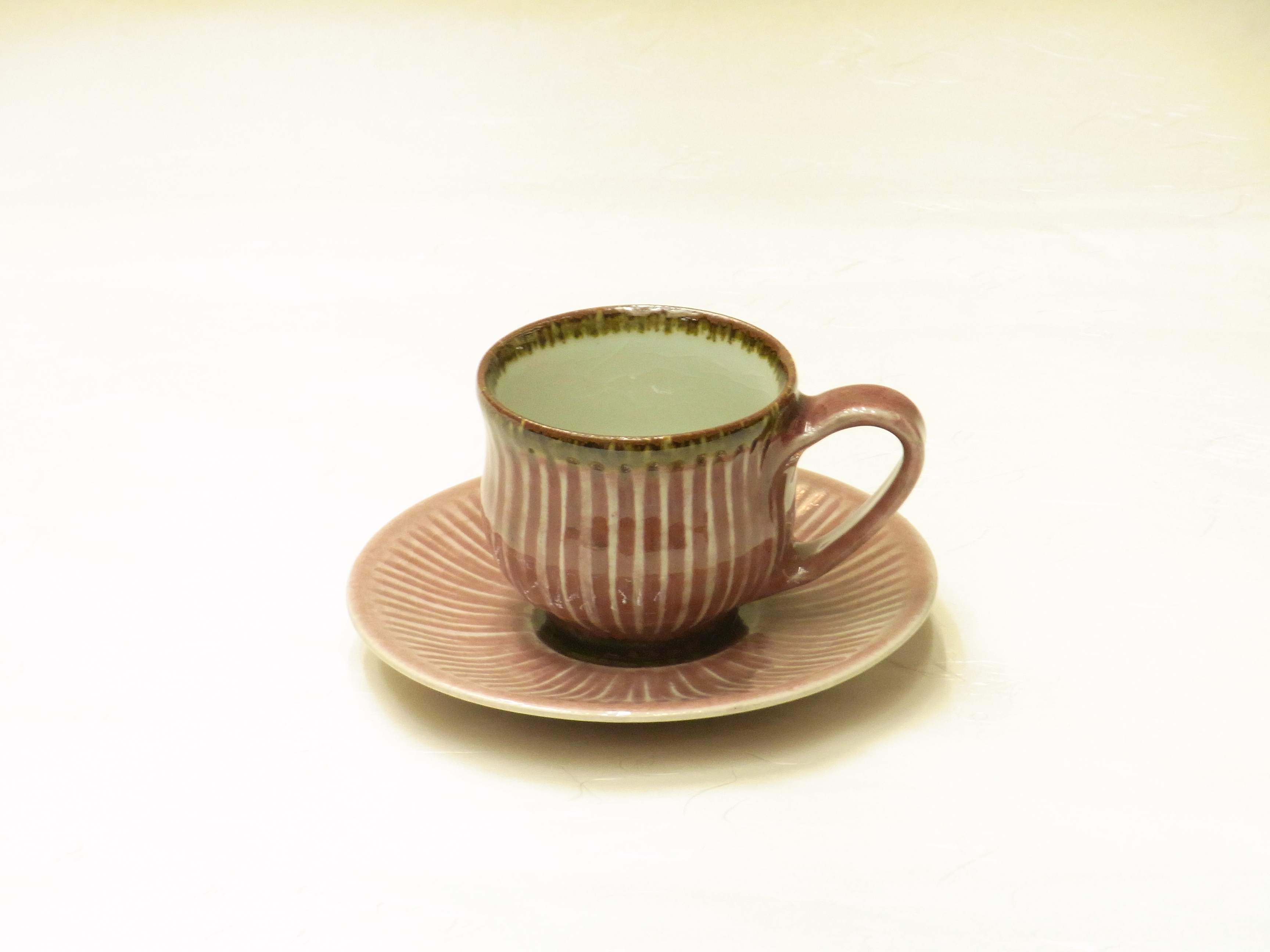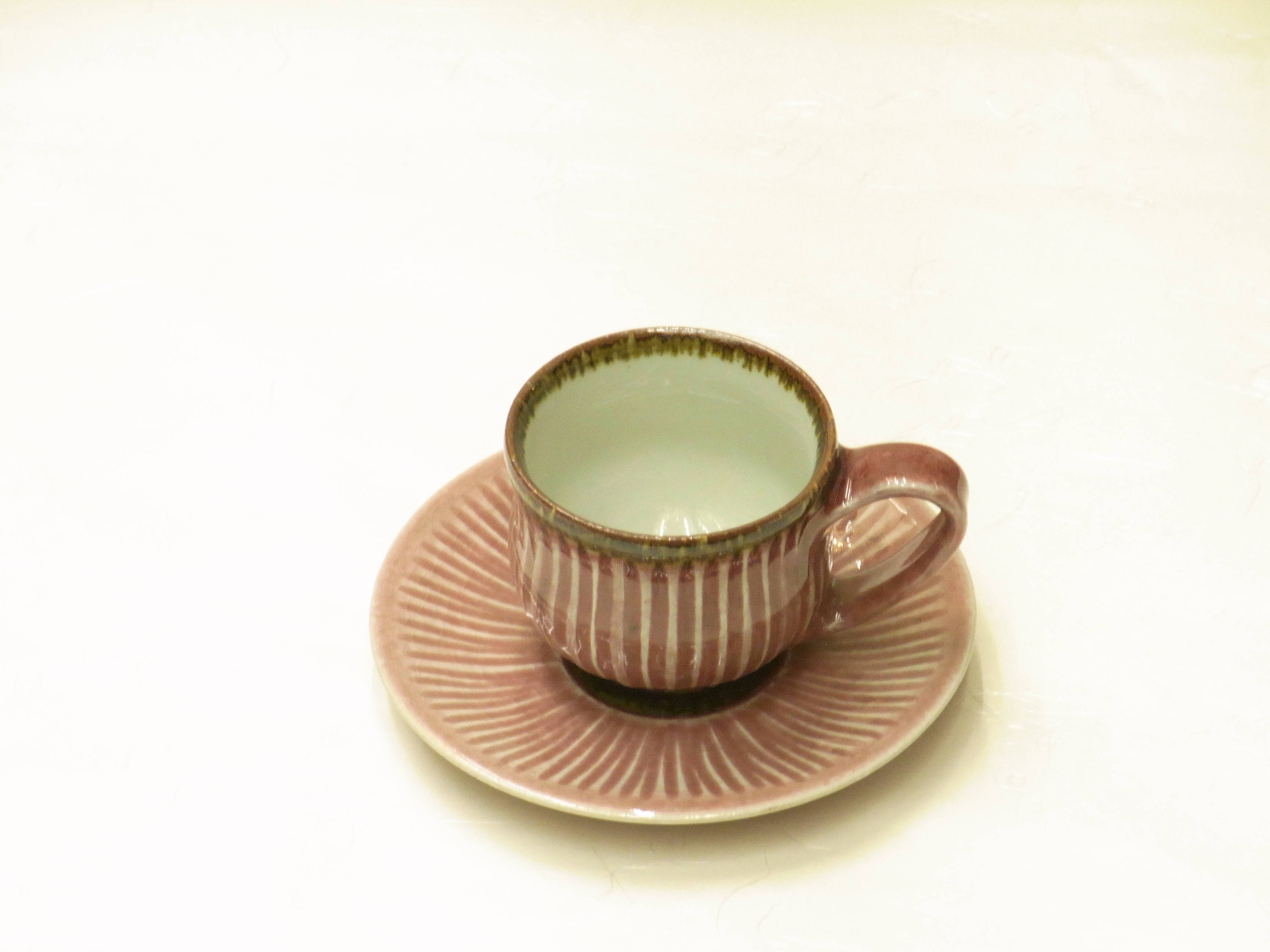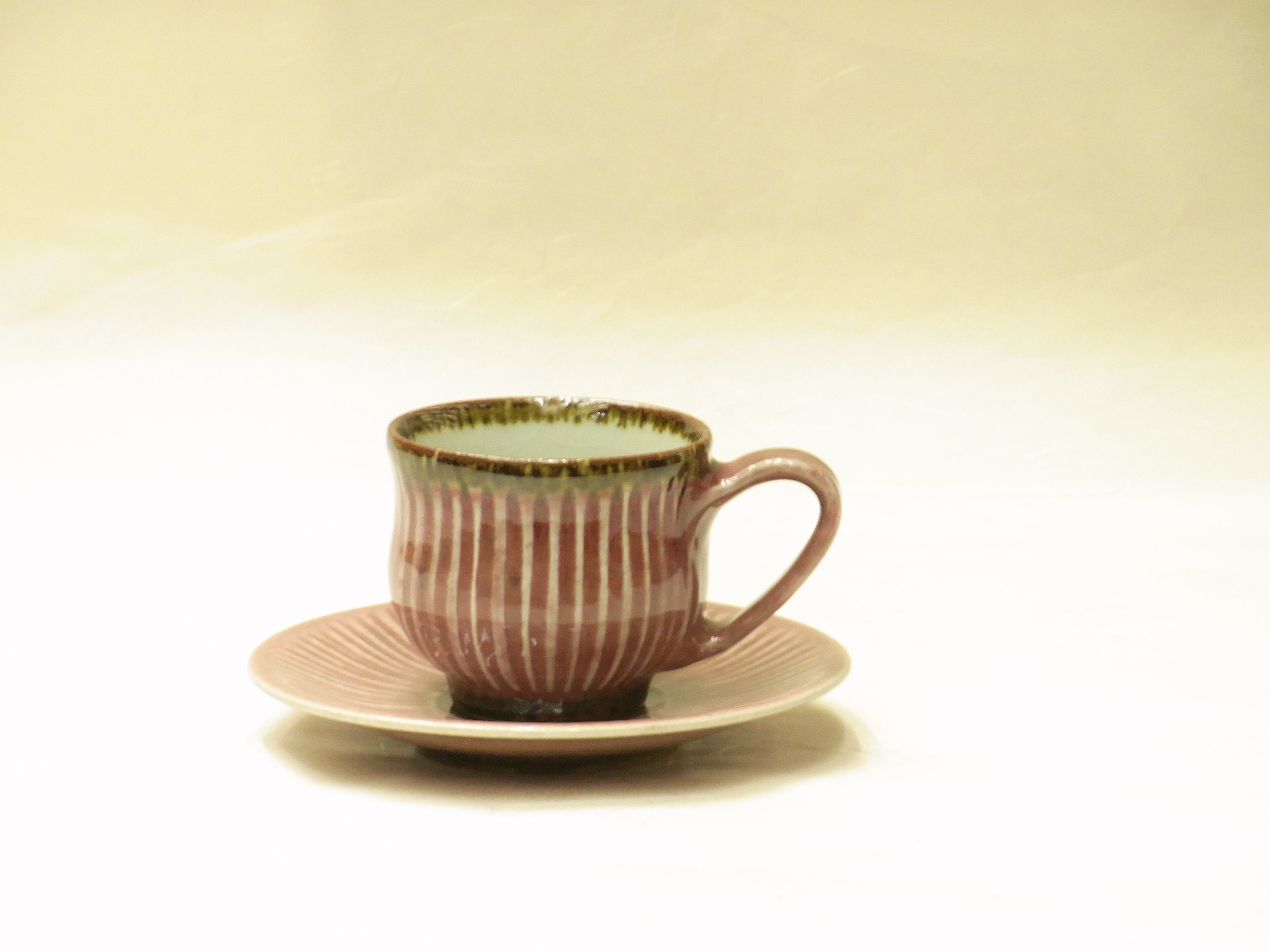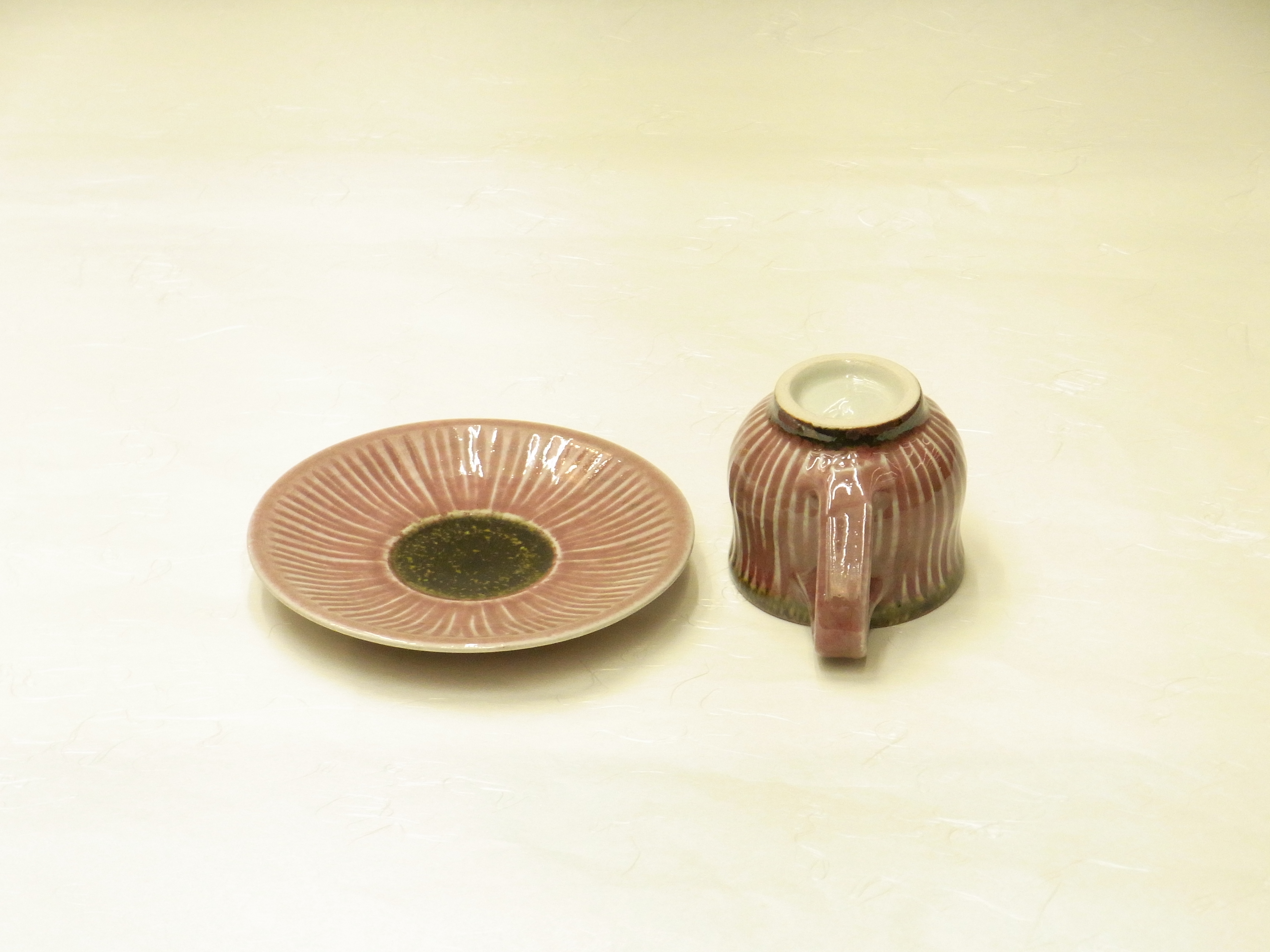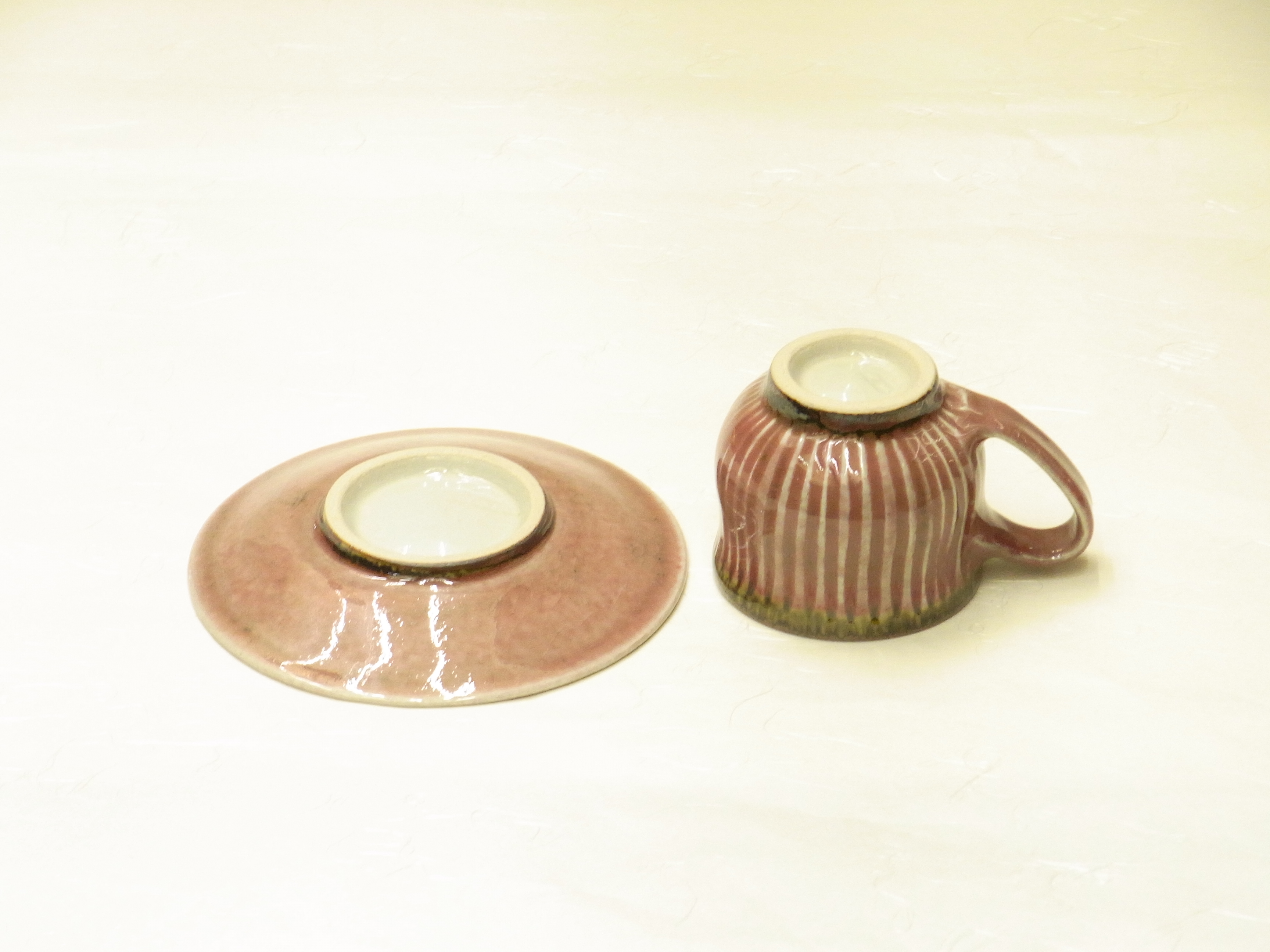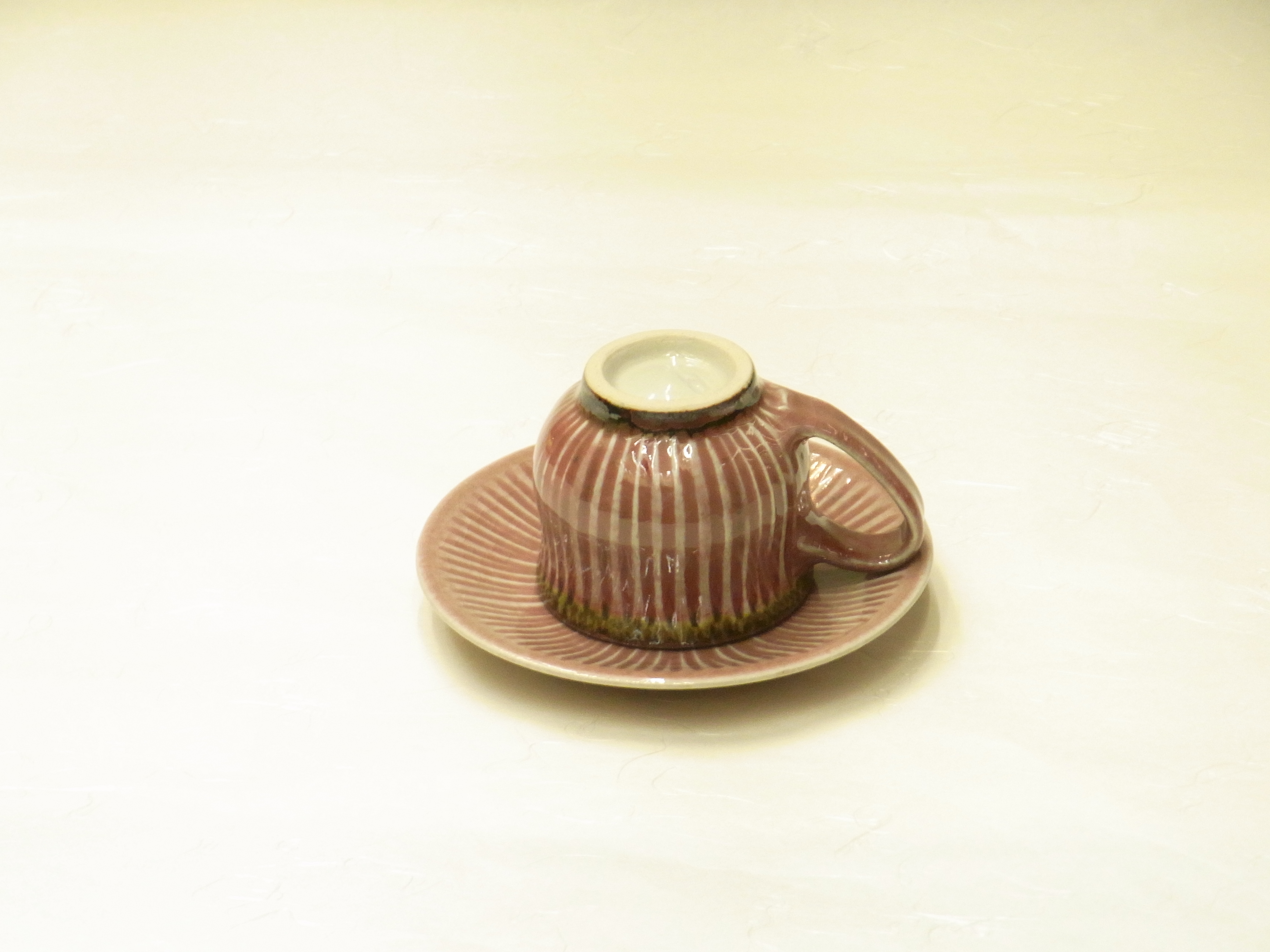清水焼から河井達之 作の珈琲碗皿のご紹介です。
辰砂釉を使って十草柄を全面に描いた珈琲碗皿です。
辰砂(しんしゃ)とは、元々磁器に用いる色釉の一種で
鮮やかな紅色をしています。
銅化合物の還元焼成によって発色します。
この珈琲碗皿に使われている、辰砂の色は
派手さがなく、落ち着いた色をしています。
イメージからすると、ラズベリーをミルクで薄めたような
クリーミーな紅色というか落ち着いたピンク色のような
何ともいえない、いい色をしています。
所々に貫入(釉薬の表面に入る細かいひび)が見られます。
カップの口と高台の部分と、ソーサーの中心の高台を置く部分が
鉄釉の黒い色となっており、民芸調の雰囲気が出ています。
実はこのカップとソーサーは全体に削ぎが入れられていて
十草の白い部分は出っ張っていて、生地の白と思われ
へこんでいる部分は削がれており、辰砂釉が入っています。
ただ、十草に塗られているわけではなく、生地を十草状に削いで
釉薬が掛けられており、相当な手間が掛けられています。
極端に薄いわけではないですが、口は若干反っており
飲みやすくなっています。
持ち手は平たく作られており、安定しており持ちやすい作りとなっています。
民芸調の味わいがありますが、重くないので使いやすいと思います。
容量もたっぷりとあり、上質な時間を楽しんで頂けそうです。
カップ 口径 8㎝ 高さ 7㎝
ソーサー 径 15.3㎝ 高さ 2.2㎝
This is an introduction to the bowl dish made by Tatsuyuki Kawai from Kiyomizu Ware.
It is a bowl dish that drew the jukusa pattern on the whole surface using the sand bowl.
Shinsha is a type of colored glaze originally used in porcelain.
It has a bright red color.
It is colored by reducing firing of copper compounds.
What is the color of the sand used in this bowl dish?
There is no flashy, and it has a calm color.
From the image, it looks like raspberry was diluted with milk.
It’s like a creamy crimson or a subdued pink color.
It has a good color that can’t be said.
Insome places, you can see fine cracks entering the surface of the glaze.
The mouth of the cup and the part where the height of the center of the saucer is placed
It is a black color of the iron glaze, and the atmosphere of the folk art style comes out.
In fact, this cup and saucer have been scraped all over the place.
The white part of the ten grass is out, and it is thought that it is white of the cloth.
The dented part is scraped and contains a sand wall.
However, it is not painted on the ten grass, but the fabric is cut into ten grasses.
Glaze is applied, and it takes a considerable amount of time and effort.
It’s not extremely thin, but the mouth is slightly warped.
It is easy to drink.
The handle is made flat, and it is stable and easy to hold.
There is a taste of folk art style, but I think that it is easy to use because it is not heavy.
There is plenty of capacity, and it seems to be able to enjoy a high-quality time.
介紹從清水燒到川井太郎的碗碗。
這是一個碗菜,使用砂釉在全表面繪製十草圖案。
沙是一種最初用於瓷器的色釉。
有鮮豔的紅色。
銅化合物的還原燒結著色。
這個碗盤中使用的砂的顏色是什麼?
沒有花哨,有柔和的顏色。
從圖像上,就像用牛奶稀釋了覆盆子一樣。
像奶油紅色或平靜的粉紅色
我什麼也說不出來,它的顏色很好。
到處都可以看到穿透(進入釉面的細裂縫)。
杯子的嘴和高地部分,以及把碟子中心高地的部分
它已成為鐵柵欄的黑色,並營造出民間藝術的氛圍。
事實上,這個杯子和碟子被刮掉。
十草的白色部分出來,似乎織物的白色
凹痕部分被刮掉,並包含砂砂。
然而,它不是塗在十草,而是把它刮成十草
釉料被掛起,它需要大量的工作。
它不是非常薄,但嘴是有點相反
更容易喝。
手柄是平的,是穩定的,很容易攜帶。
有民間藝術的味道,但我認為它很容易使用,因為它不是那麼重。
有很多容量,似乎你可以享受高品質的時間。
介绍从清水烧到川井太郎的碗碗。
这是一个碗菜,使用砂釉在全表面绘制十草图案。
沙是一种最初用于瓷器的色釉。
有鲜艳的红色。
铜化合物的还原烧结着色。
这个碗盘中使用的砂的颜色是什么?
没有花哨,有柔和的颜色。
从图像上,就像用牛奶稀释了覆盆子一样。
像奶油红色或平静的粉红色
我什么也说不出来,它的颜色很好。
到处都可以看到穿透(进入釉面的细裂缝)。
杯子的嘴和高地部分,以及把碟子中心高地的部分
它已成为铁栅栏的黑色,并营造出民间艺术的氛围。
事实上,这个杯子和碟子被刮掉。
十草的白色部分出来,似乎织物的白色
凹痕部分被刮掉,并包含砂砂。
然而,它不是涂在十草,而是把它刮成十草
釉料被挂起,它需要大量的工作。
它不是非常薄,但嘴是有点相反
更容易喝。
手柄是平的,是稳定的,很容易携带。
有民间艺术的味道,但我认为它很容易使用,因为它不是那么重。
有很多容量,似乎你可以享受高品质的时间。
